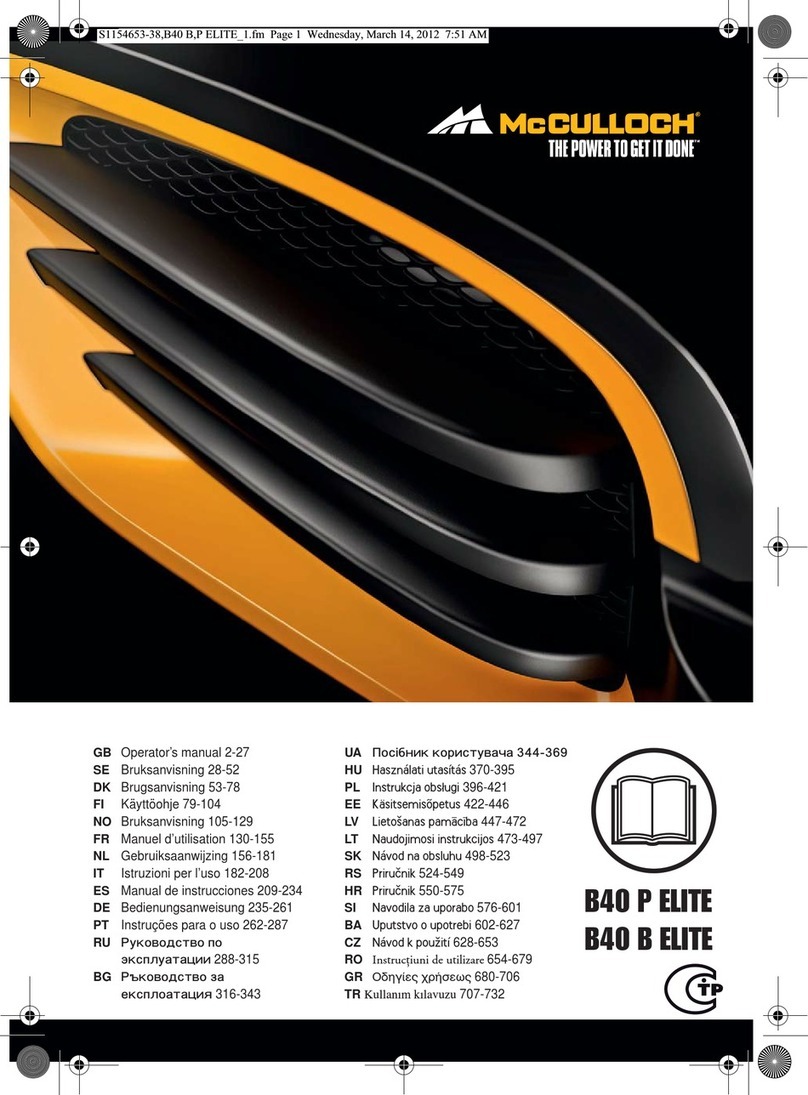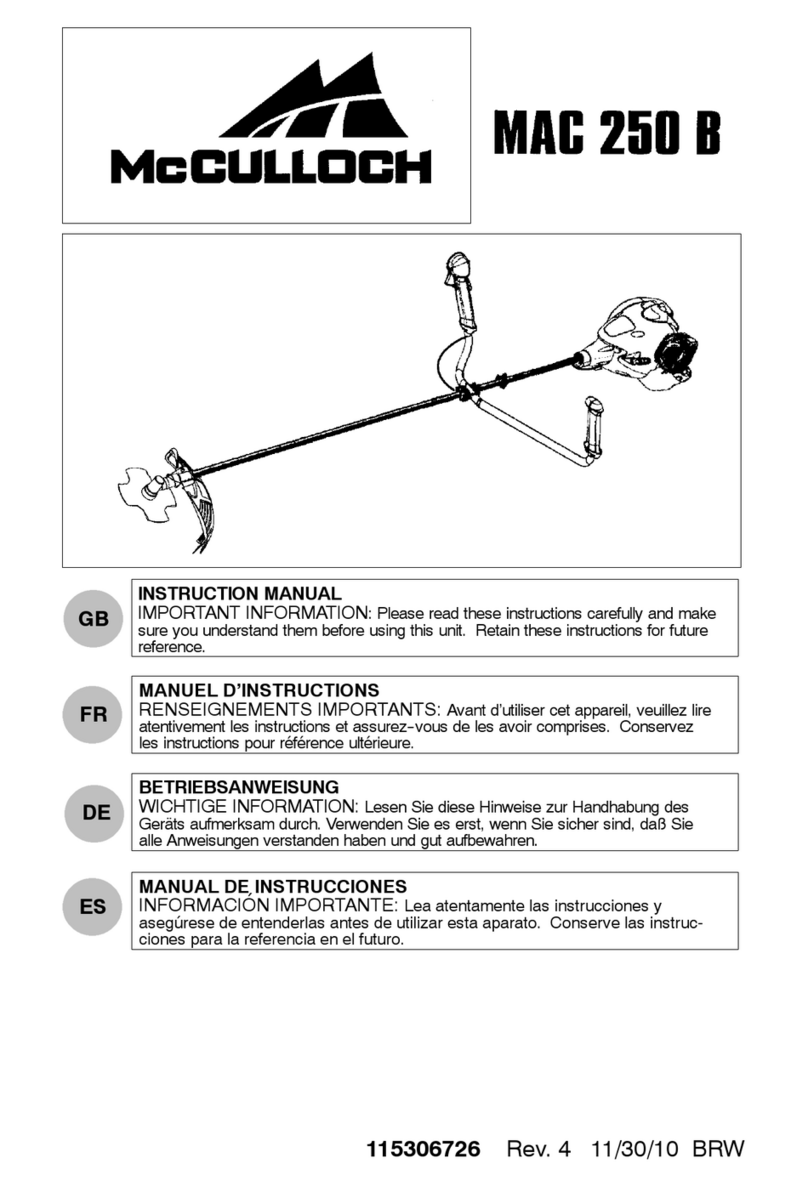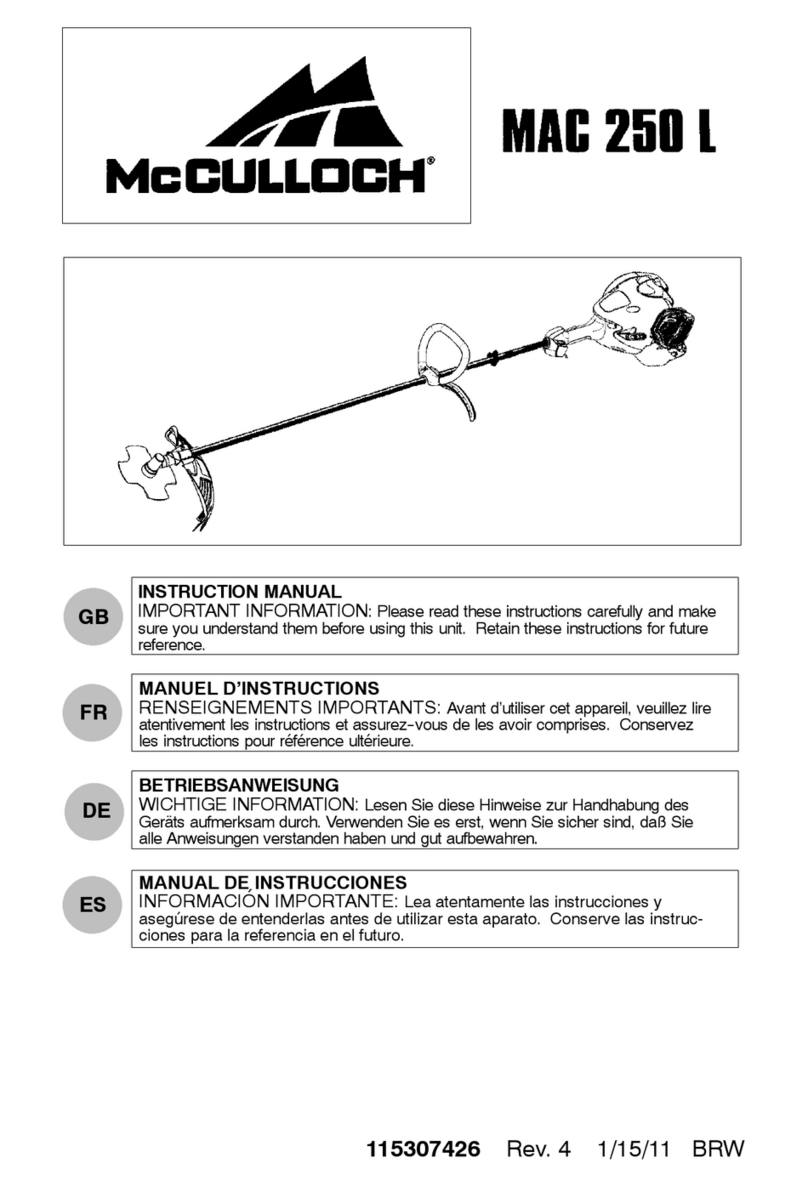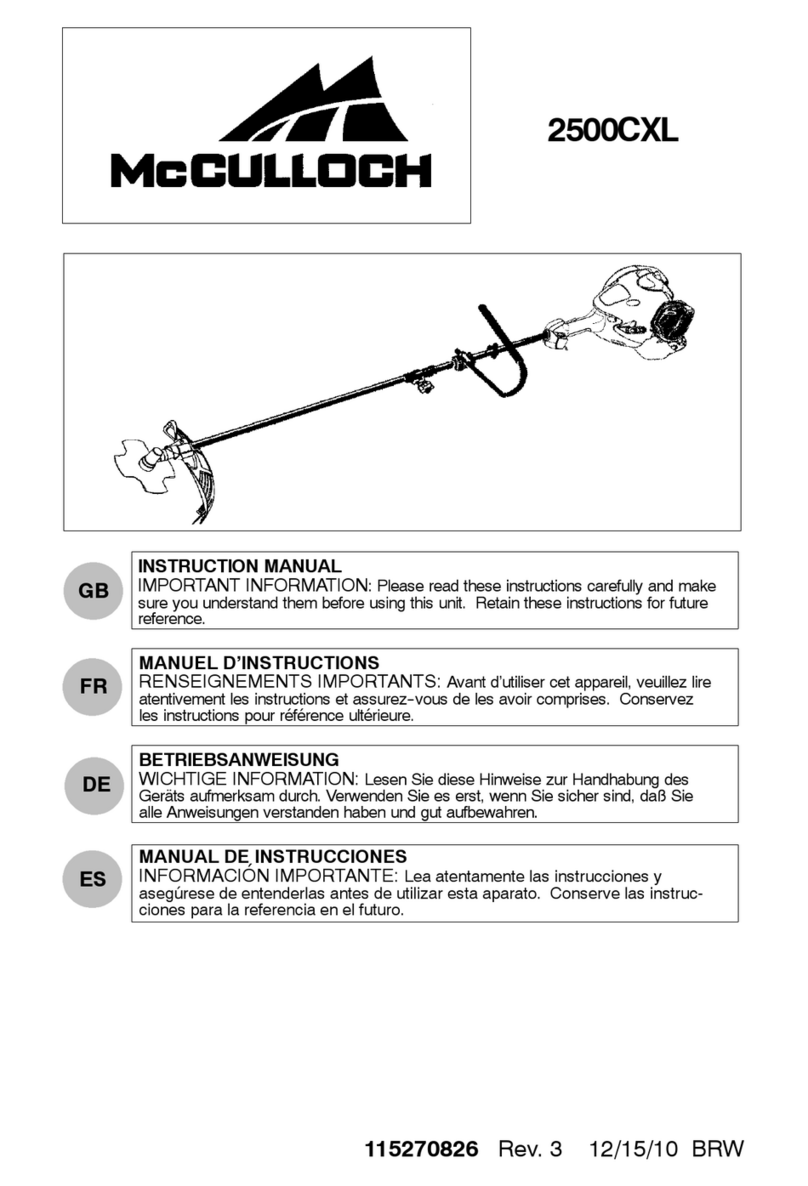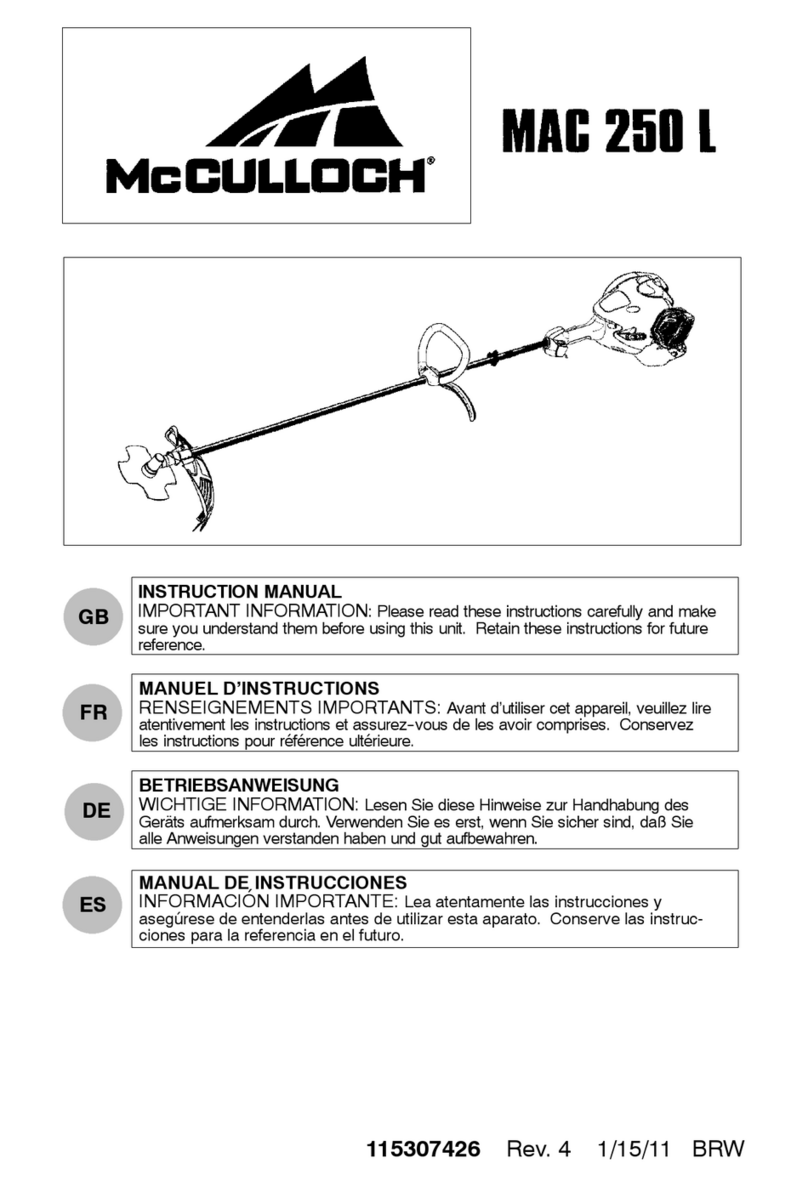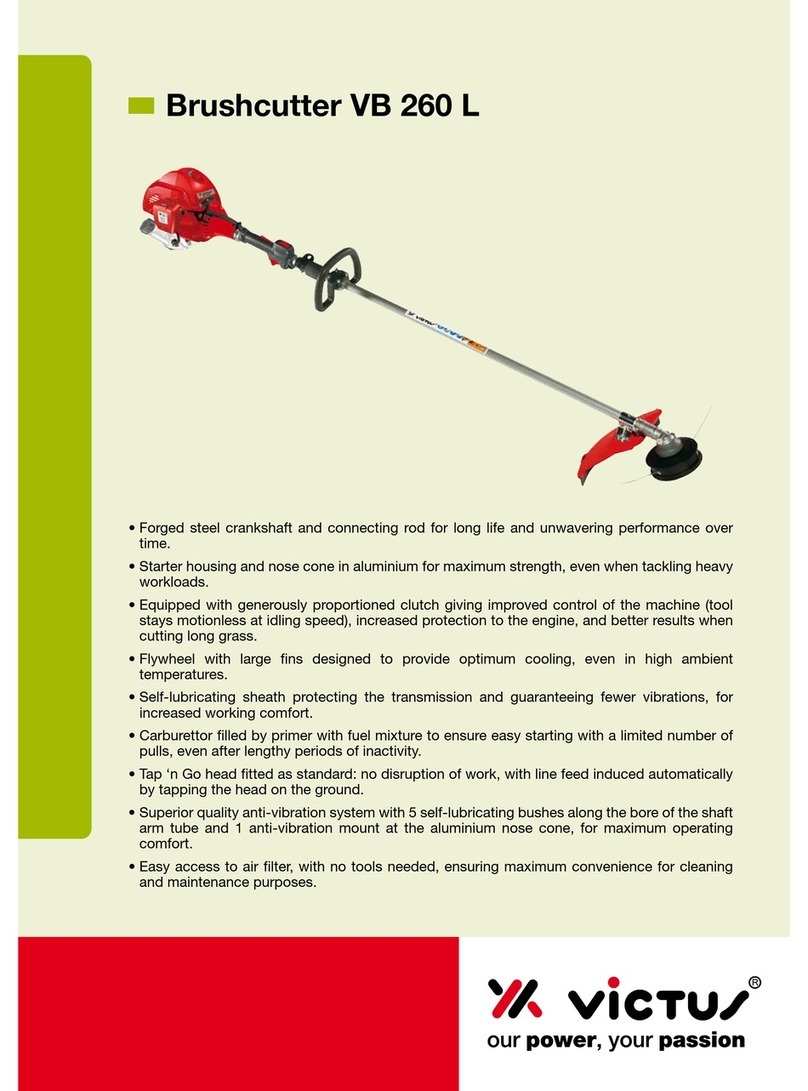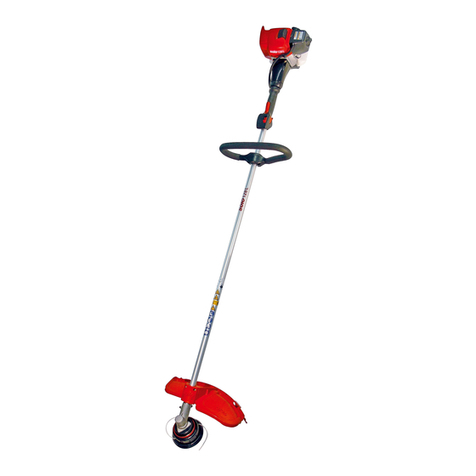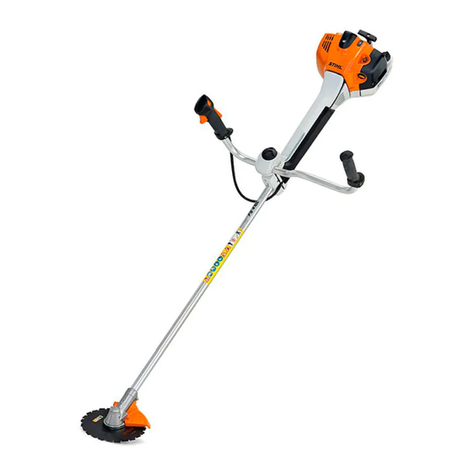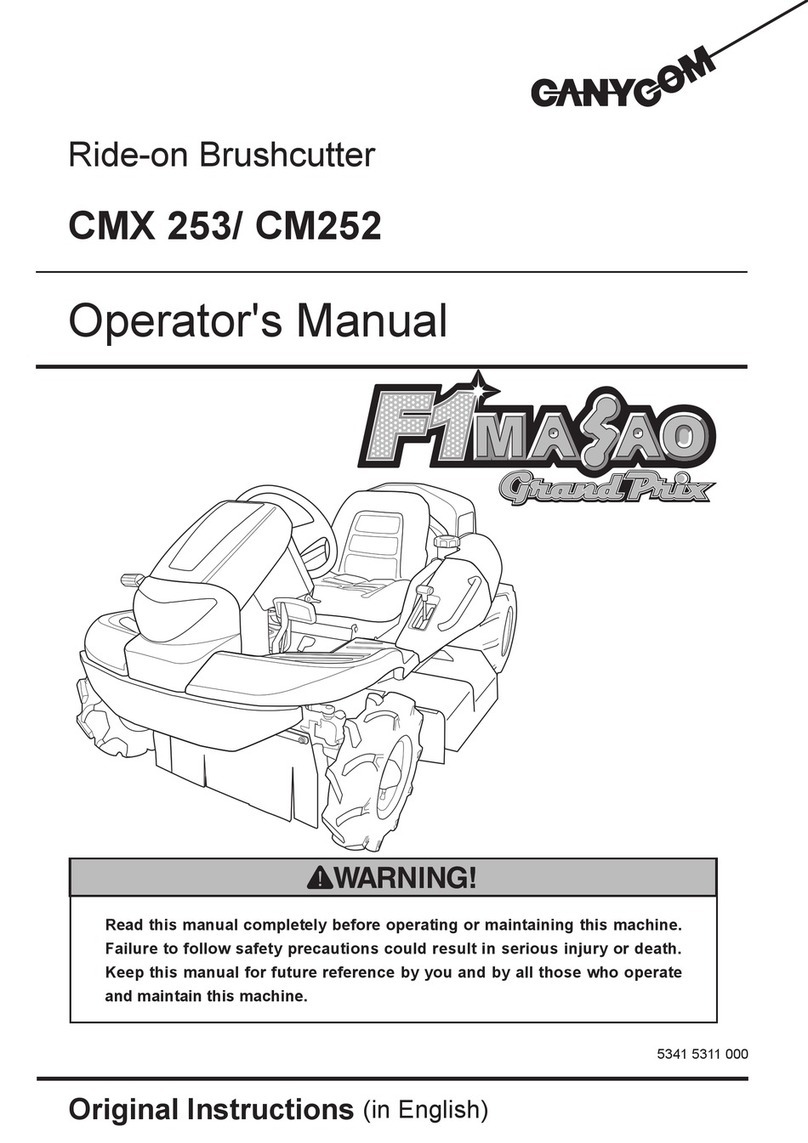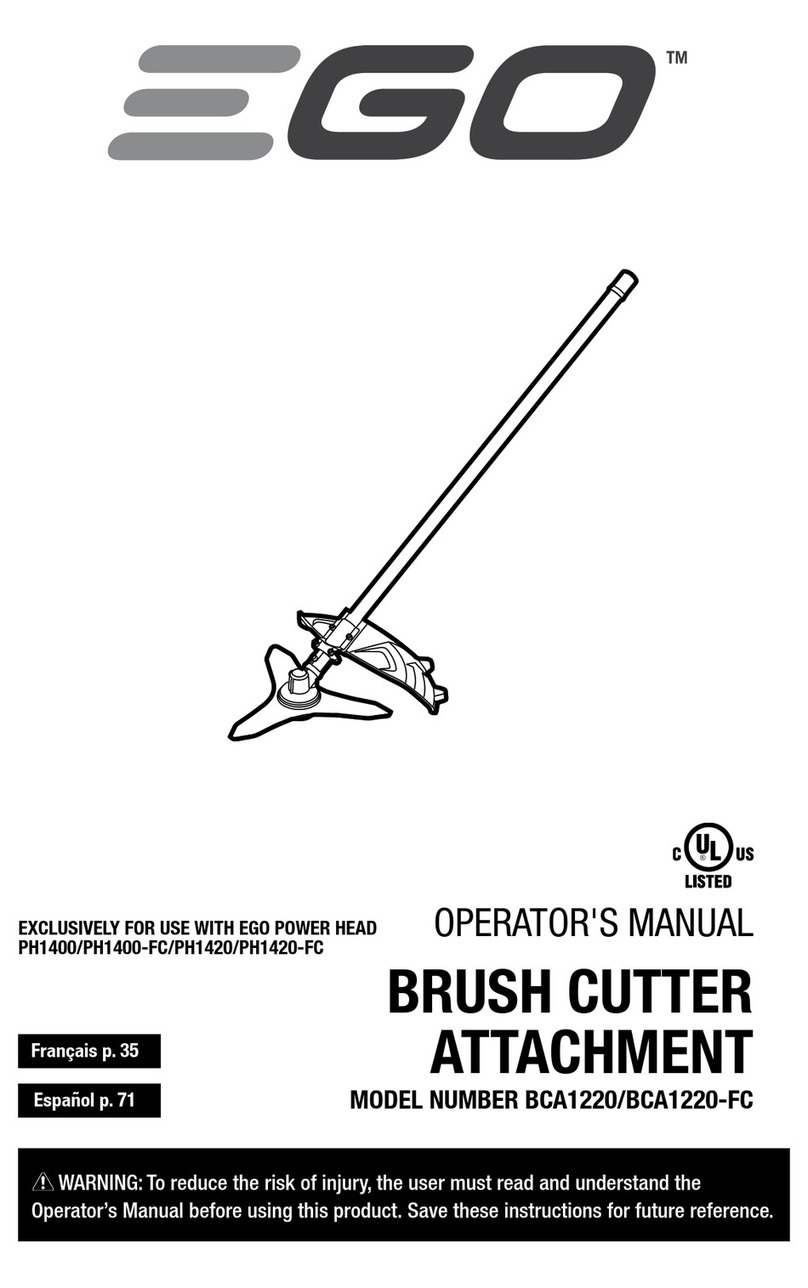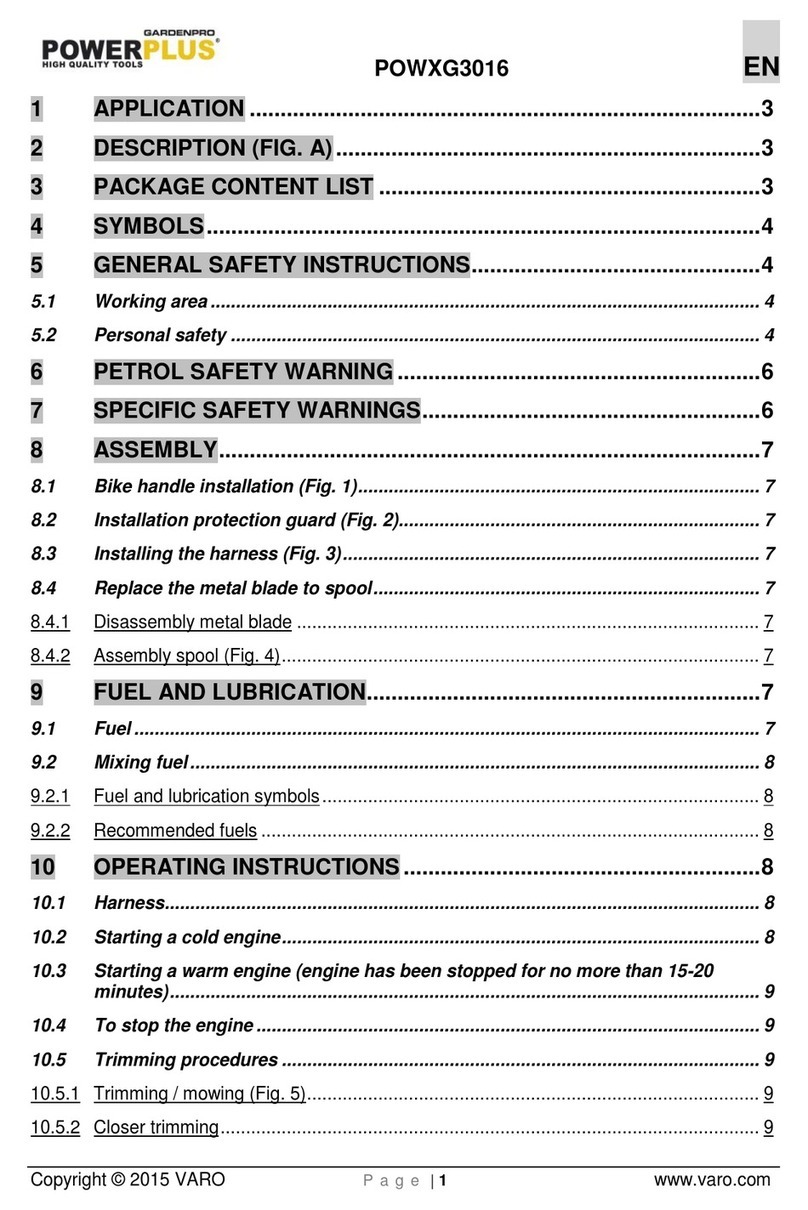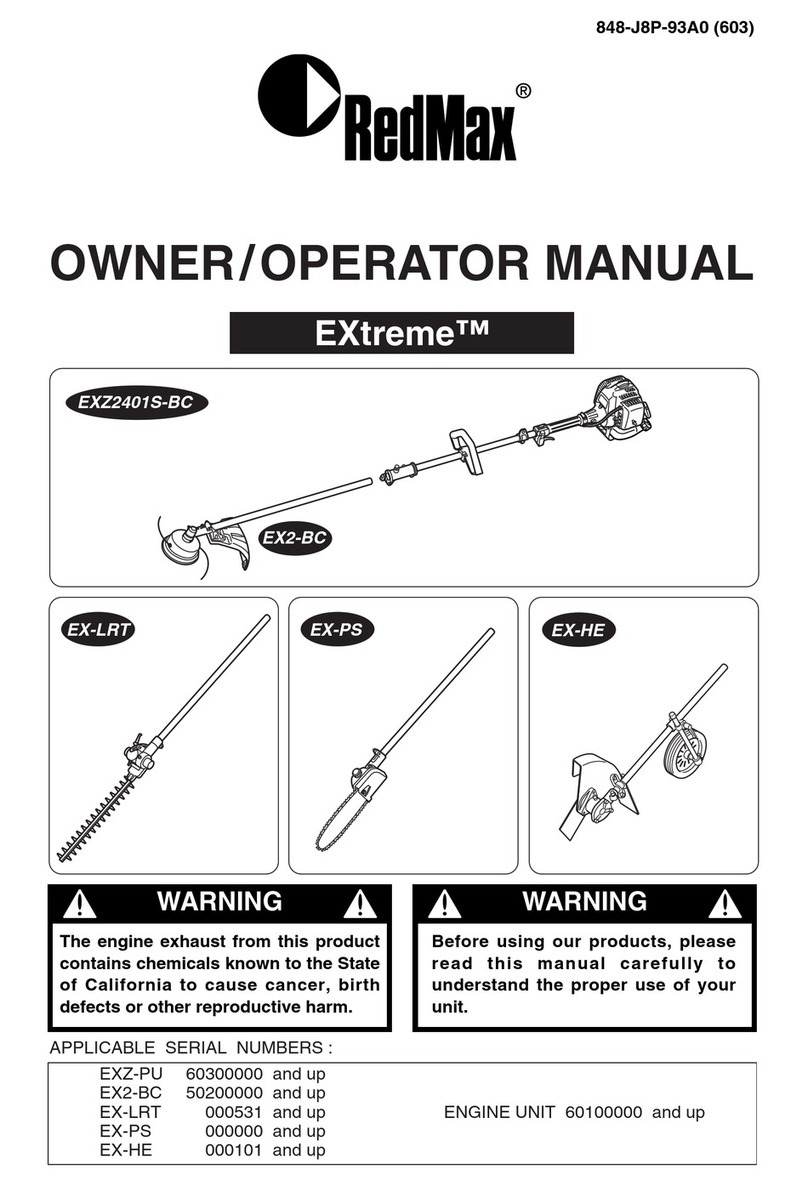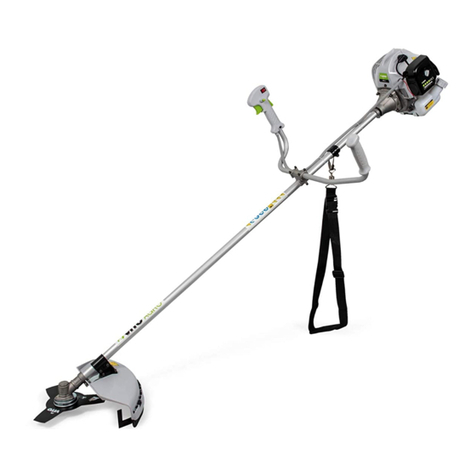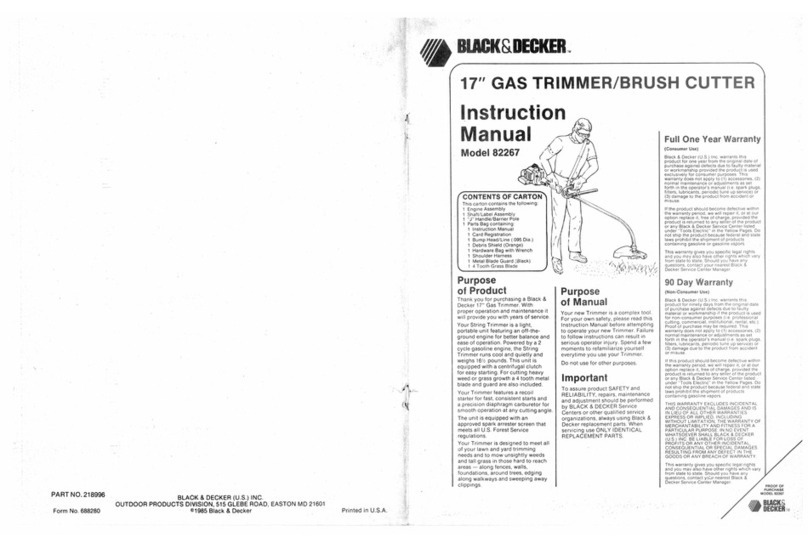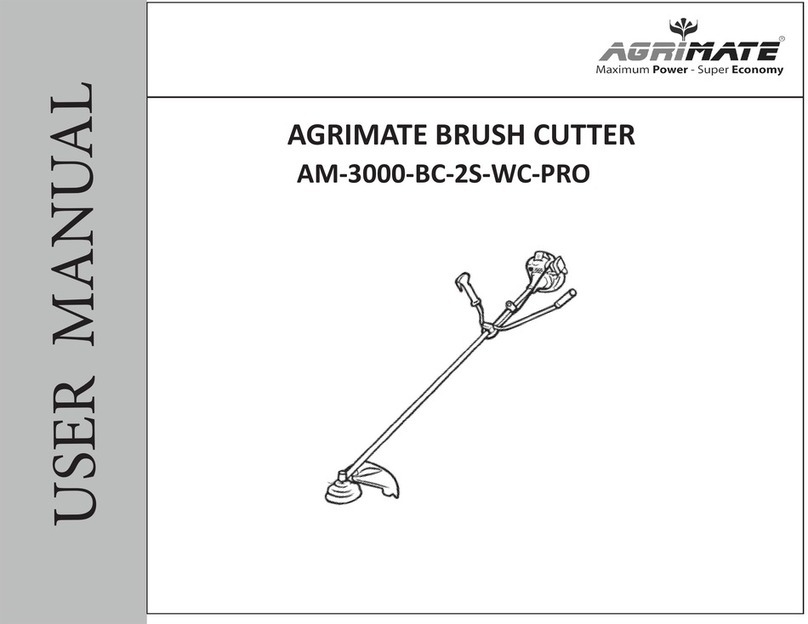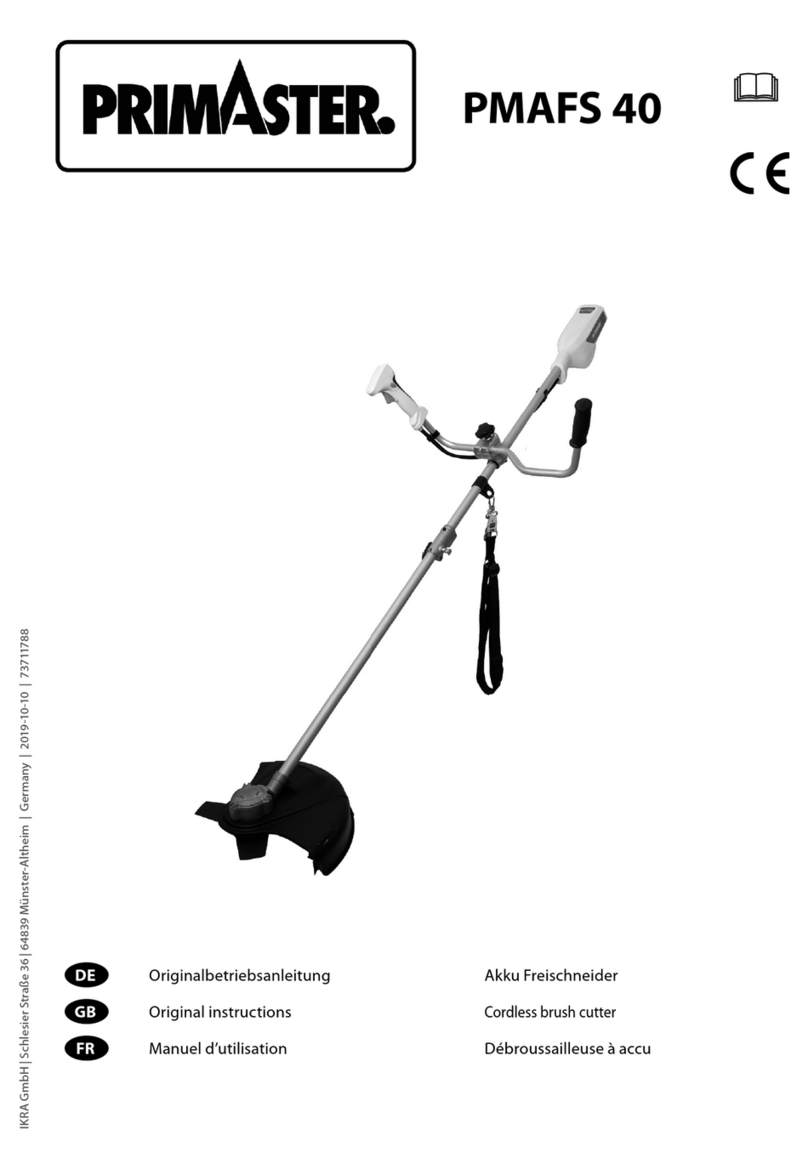4
WARNING: The blade continues to
spin after the throttle is released or, engine is
turned off. The coasting blade can throw objects
or seriously cut if accidentally touched. Stop the
blade by contacting the right hand side of the
coasting blade with material already cut.
Stop coasting
blade by contact
with cut material.
OPERATOR SAFETY
SDress properly. Always wear safety
glasses or similar eye protection when op-
erating, or performing maintenance, on
your unit (safety glasses are available).
Eye protection should be marked Z87.
SAlways wear face or dust mask if operation
is dusty.
SAlways wear heavy, long pants, long
sleeves, boots, and gloves. Wearing safety
leg guards is recommended.
SAlways wear foot protection. Do not go
barefoot or wear sandals. Stay clear of
blade/spinning line.
SSecure hair above shoulder length. Secure
or remove loose clothing or clothing with
loosely hanging ties, straps, tassels, etc.
They can be caught in moving parts.
SBeing fully covered also helps protect you
from debris and pieces of toxic plants
thrown by spinning line.
SStay alert. Do not operate this unit when you
are tired, ill, upset or under the influence of al-
cohol, drugs, or medication. Watch what you
are doing; use common sense.
SWear hearing protection. Long or continu-
ous exposure to high noise levels may
cause permanent hearing impairment.
SNever start or run inside a closed room or
building. Breathing exhaust fumes can kill.
SKeep handles free of oil and fuel.
SAlways use the handlebar and a properly
adjusted shoulder strap with a blade (see
ASSEMBLY).
UNIT / MAINTENANCE SAFETY
WARNING: Stop unit and disconnect
the spark plug before performing mainte-
nance (except carburetor adjustments).
SThrow away blades that are bent, warped,
cracked, broken, or damaged in any other
way. Replace trimmer head parts that are
cracked, chipped, broken, or damaged in
any other way before using the unit.
SMaintain unit according to recommended
procedures. Keep blade sharp. Keep cut-
ting line at the proper length.
SUse only 3 mm diameter McCulloch brand
replacement line. Never use wire, rope,
string, etc.
SInstall required shield properly before using
theunit.Usethemetalshieldforallmetal
blade use. Use the plastic shield for all line
trimmer use.
SUse only specified blade or trimmer head;
make sure it is properly installed and se-
curely fastened.
SNever start engine with clutch shroud re-
moved. The clutch can fly off and cause se-
rious injury.
SBe sure blade or trimmer head stops turning
when engine idles.
SMake carburetor adjustments with the low-
er end supported to prevent blade or trim-
mer line from contacting any object. Hold
unit by hand; do not use the shoulder strap
for support.
SKeep others away when making carbure-
tor adjustments.
SUse only recommended McCulloch accesso-
ries and replacement parts.
SHave all maintenance and service not ex-
plained in this manual performed by your au-
thorized service dealer.
FUEL SAFETY
SMix and pour fuel outdoors.
SKeep away from sparks or flames.
SUse a container approved for fuel.
SDo not smoke or allow smoking near fuel or
the unit.
SAvoid spilling fuel or oil. Wipe up all fuel spills.
SMove at least 3 meters away from fueling
site before starting engine.
SStop engine and allow to cool before re-
moving fuel cap.
SAlways store gasoline in a container ap-
proved for flammable liquids.
CUTTING SAFETY
WARNING: Inspect the area to be cut
before each use. Remove objects (rocks,
broken glass, nails, wire, string, etc.) which
can be thrown or become entangled in the
blade or trimmer head.
SKeep others including children, animals,
bystanders, and helpers at least 50 feet (15
meters) away. Stop engine immediately if
you are approached.
SAlways keep engine on the right--hand side
of your body.
SHold the unit firmly with both hands.
SKeep firm footing and balance. Do not
overreach.
SKeep blade or trimmer head below waist
level. Do not raise engine above your waist.
SKeep all parts of your body away from blade,
trimmer head, and muffler when engine is
running. A hot muffler can cause serious
burns.
SCut from your left to your right. Cutting on
right side of the shield will throw debris
away from the operator.
SUse only in daylight or good artificial light.
SUse only for jobs explained in this manual.



